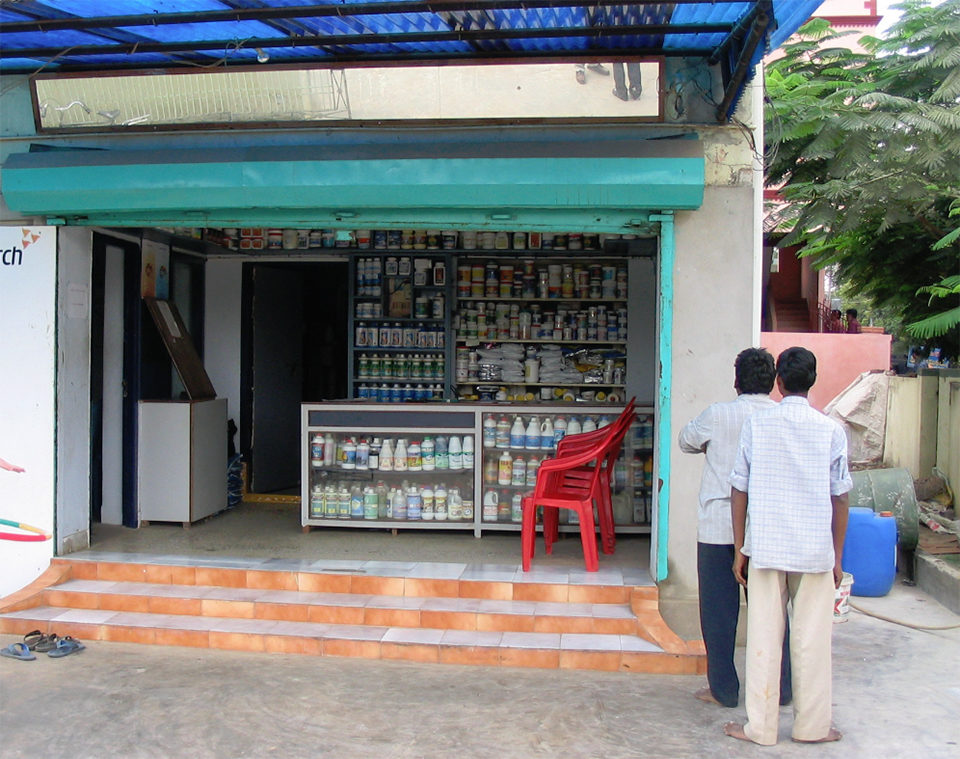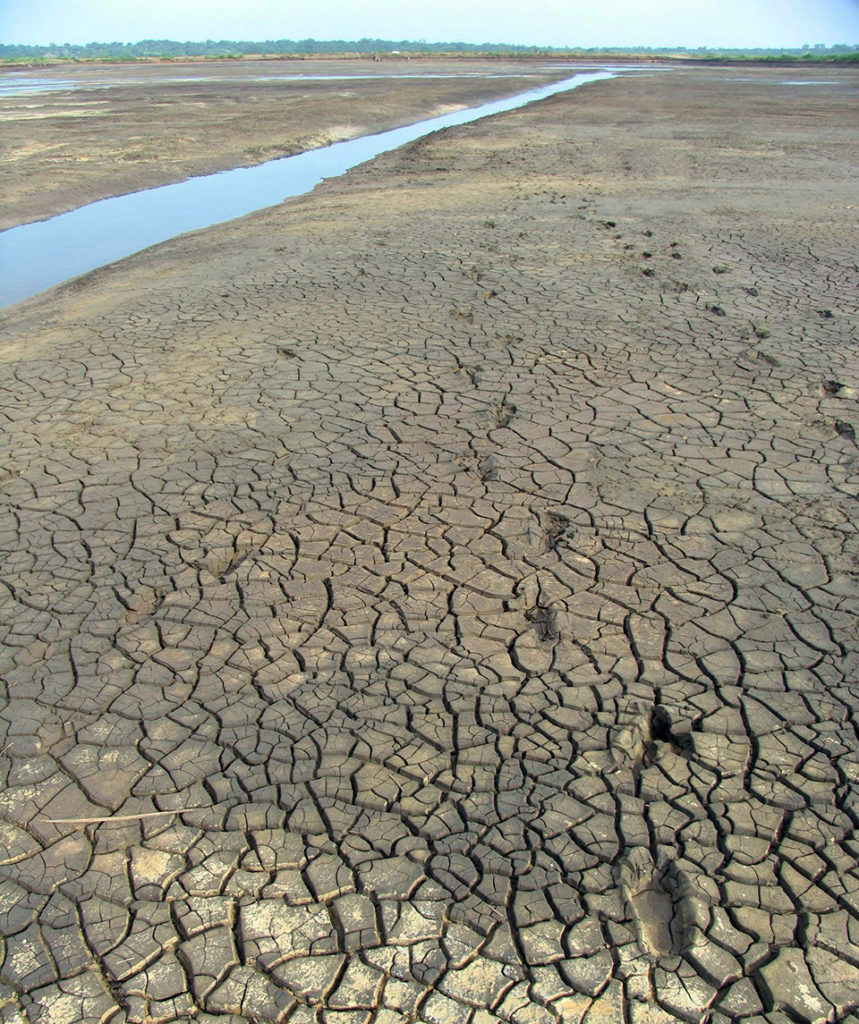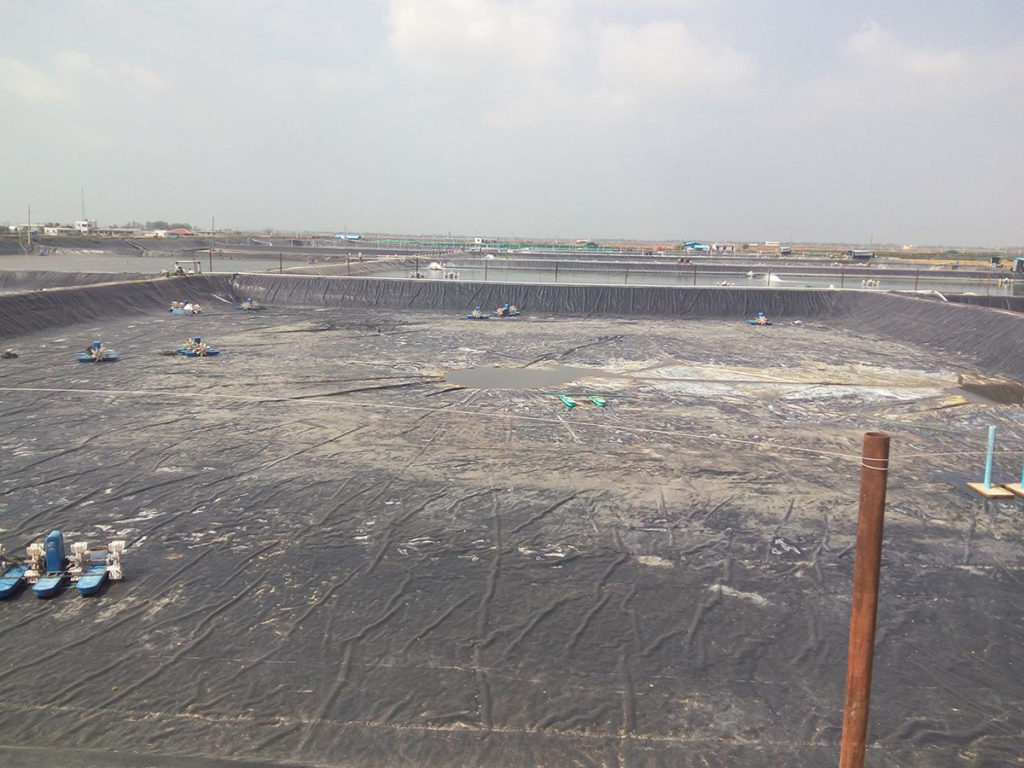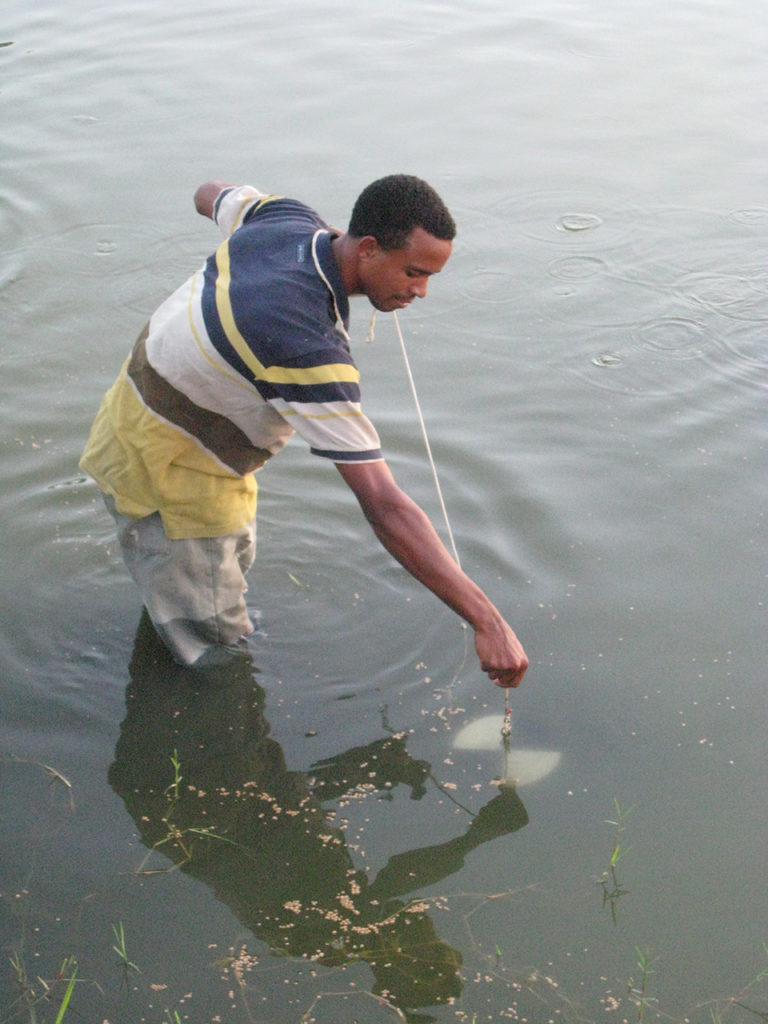How inorganic fertilizers, mineral mixes, iron, zeolite and others impact pond aquaculture

Many products advertised to improve water quality in ponds are displayed at aquaculture trade shows. Products include many brands of bacterial inocula (usually called probiotics) for improving water quality, zeolite for removing ammonia and other toxic substances from water, mineral mixes for improving ionic concentrations in water, silicate fertilizers to promote diatoms, inorganic fertilizers, liming materials and products made from humic acids. Some of these products are known to be effective when needed and applied correctly.
Inorganic fertilizers and lime
Inorganic fertilizers are essential where phytoplankton abundance is low, and liming materials are beneficial in ponds with acidic bottom soils and low-alkalinity waters. But inorganic fertilizers may cause excessive phytoplankton blooms when used excessively and liming materials do not dissolve in water already saturated with calcium carbonate. Waters in shrimp ponds often are saturated with calcium carbonate and liming materials settle to the bottom without dissolving.
Many farmers, particularly in Asia, believe that frequent, small applications of liming materials will stabilize pH in ponds. The pH of pond waters changes naturally as a result of net removal of carbon dioxide or bicarbonate from water for phytoplankton photosynthesis in the daytime, and net return of carbon dioxide to water by respiratory processes at night when there is no photosynthesis. The pH of most aquaculture ponds results from the effects of biological activity on carbon dioxide concentration.
Mineral mixes
Mineral mixes usually are unnecessary in sea water, which contains all minerals required for shrimp growth (Table 1), and freshwater and estuarine water usually have greater concentrations of most trace nutrients than found in seawater. Thus, coastal shrimp ponds seldom require mineral mixes.
But in inland, low-salinity culture of shrimp and fish, waters may have inadequate concentrations of potassium and magnesium for effective osmoregulation, and muriate of potash fertilizer (potassium chloride), magnesium sulfate, potassium magnesium sulfate, or magnesium chloride can be added to increase potassium and magnesium concentrations.
Boyd, water quality products, Table 1
| Element | mg/L | Element | mg/L |
|---|
Element | mg/L | Element | mg/L |
|---|---|---|---|
| Chloride | 19,000 | Fluoride | 1.3 |
| Sodium | 10,500 | Silicate | 6.4 |
| Sulfate | 2,700 | Boron | 4.6 |
| Magnesium* | 1,350 | Iron | 0.01 |
| Calcium | 400 | Molybdenum | 0.01 |
| Potassium | 380 | Zinc | 0.01 |
| Bicarbonate** | 142 | Copper | 0.003 |
| Bromide | 65 | Manganese | 0.002 |
| Strontium | 8 | Cobalt | 0.001 |
*Total hardness = 6,562 mg/L as CaCO3.
**Total alkalinity = 116 mg/L as CaCO3.
Iron and silica
There is evidence that iron is limiting to phytoplankton growth in seawater, and inclusion of chelated ion in shrimp pond fertilizers might increase phytoplankton growth. The iron should be chelated, because iron has a low solubility in seawater. Diatoms have a high silicon requirement, because diatom cells are encased in a silica shell called a frustule. Many aquaculturists believe that diatoms are particularly good natural food organisms in shrimp ponds, and silicate applications may be applied to enhance diatom production. Studies in ponds with low silicate concentration (<2 mg/L as silicon) revealed that silicate fertilization increased diatom abundance.
However, sodium silicate and calcium silicate (the typical sources used in shrimp ponds) are not highly soluble, and greater application rates than those recommended by vendors of silicate products would be necessary to stimulate diatoms. I suspect that 30 to 50 kg/ha of sodium silicate or calcium silicate usually would be necessary to increase silicate concentration by about 1 mg/L. Calcium silicate is the better choice, because it is more soluble than sodium silicate.
Zeolite
Zeolite can remove ammonium from water through cation exchange in which sodium ions on the zeolite are exchanged with ammonium ions in the water. But zeolite also removes calcium, magnesium, sodium and potassium ions from water. Several studies have shown that zeolite is not effective in decreasing ammonia nitrogen concentration in shrimp ponds, because competition with other ions restricts the uptake of ammonium on cation exchange sites of zeolite. Zeolite absorbs very little hydrogen sulfide or other gases from water.
Zeolite can be used to remove ammonium from water in high-density systems such as fish hauling tanks and aquaria by recirculating the water through a zeolite-packed filter. The exchange capacity of the column will be expended as sodium is exchanged for other cations in water, but back-flushing with sodium chloride solution recharges the filter for further use. Ponds contain a large volume of water and filtration through a zeolite filter is not feasible. Zeolite is simply broadcast on the surface, and it becomes saturated with cations from the pond water and little ammonium removal results even in freshwater.
Humic acid products
Humic acid products can chelate metals and major cations. They have been used in agricultural soils with excessive calcium concentrations to chelate calcium and minimize phosphorus precipitation as calcium phosphate. Humic acid products possibly could be useful in aquaculture ponds, but there has been no research for verification of this possibility.
Bacterial inocula
Bacteria have a tremendous influence on water quality in ponds. They degrade organic matter, oxidize ammonia nitrogen to nitrate nitrogen, denitrify nitrate to nitrogen gas, and oxidize iron, manganese and hydrogen sulfide. Bacteria are ubiquitous, and if they are not performing normally, it is not from the lack of bacteria, but the result of environmental conditions inconducive to optimal rates of bacterial activity. Surprisingly, there is a widespread belief that bacterial products (often incorrectly called probiotics) can improve water and soil quality in ponds.
The author has not found scientific evidence to support the use of bacterial inocula in pond water quality management. While bacterial inocula may be useful in alleviation of certain disease problems in hatcheries, there is little research to justify their use to improve water quality.
Why do farmers purchase these unproven products? I do not know the answer, but I have suspicions. In cases where survival and growth are low, farmers may try unproven products out of desperation. In other instances, farmers may simply be seeking “the silver bullet” for solving all their water quality problems.
The practice is similar to the use of unproven, “over-the-counter” health-improvement products. I once went to a doctor in Asia about a broken blood vessel in my eye. He gave me five different types of pills and said that the redness in my eye was “no big deal.” I asked why five types of pills for something that was “no big deal.” He answered that if he did not give his patients a lot of pills, they would think that he was a bad doctor. He then pointed to one pill and said, “take it,” the others are sugar, vitamins and minerals.
Perspectives
Although human nature may be the reason for farmers using a lot of unproven products, I have spent most of my life as a researcher and cannot in good conscience recommend unproven products. Nevertheless, most of these products are harmless to fish and shrimp, and if it makes you feel better to use them, you have my permission.
Now that you've reached the end of the article ...
… please consider supporting GSA’s mission to advance responsible seafood practices through education, advocacy and third-party assurances. The Advocate aims to document the evolution of responsible seafood practices and share the expansive knowledge of our vast network of contributors.
By becoming a Global Seafood Alliance member, you’re ensuring that all of the pre-competitive work we do through member benefits, resources and events can continue. Individual membership costs just $50 a year.
Not a GSA member? Join us.
Author
-

Claude E. Boyd, Ph.D.
School of Fisheries, Aquaculture and Aquatic Sciences
Auburn University
Auburn, Alabama 36849 USA
Tagged With
Related Posts

Responsibility
Drying, liming, other treatments disinfect pond bottoms
The traditional way of destroying organisms in pond bottoms is thorough dry-out for a week or longer. Fish toxicants and liming can kill unwanted parasites.

Responsibility
Appraising pond liners for shrimp culture
The use of plastic-lined ponds by shrimp farmers can significantly improve production efficiency, support more production cycles per year, and higher mechanical aeration rates and stocking densities. The capital cost of lining ponds can be very significant, so a thorough feasibility analysis is recommended when considering this production tool.

Responsibility
Assessing, reducing pond seepage
Ponds constructed on sandy or permeable soils are most likely to have high seepage rates. Ponds built in any soil can seep if improperlty constructed.

Responsibility
Thoughts on pond fertilization
Prof. Boyd provides additional insights into fertilization of aquaculture ponds, discussing phytoplankton requirements, organic and inorganic fertilizers, and other relevant aspects of pond management.

